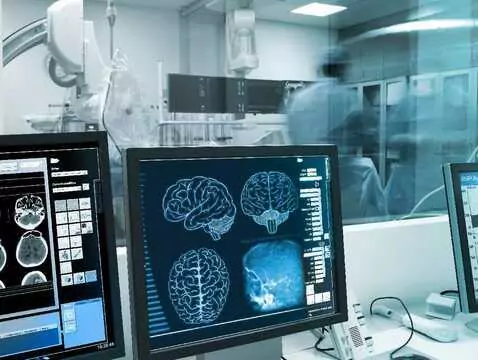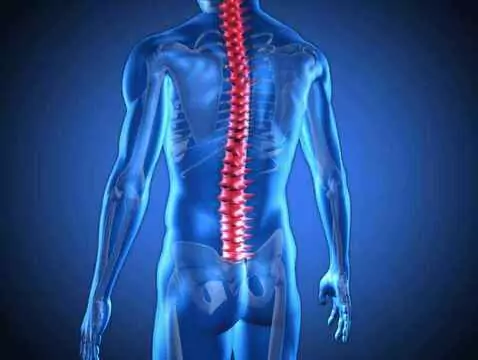The skin is a mirror of health. Skin examination can provide important diagnostic clues in many disease entities and, as an important part of the patient examination and diagnosis process, should not be overlooked. Also, some diseases involving the nervous system may be accompanied by characteristic skin changes even at the beginning of the disease process, when neurological symptoms are not yet present.
Tuberous sclerosis
Tuberous sclerosis, or Bourneville Pringle disease, is a disease that manifests richly on the skin. The most pathognomonic skin lesions are sebaceous adenomas - small, red or yellow-pink papules (Pringle's nodules) occupying symmetrically usually the cheeks, nose and nasolabial folds.
Other skin manifestations include:
- hypopigmented patches - foci of discoloured skin occurring most commonly on the trunk,
- finer, multiple discolourations 1-3 mm in diameter are referred to as 'confetti patches' - most commonly located on the skin of the forearms and lower legs,
- flat fibromas on the forehead and uvulates of the neck and nape area, nail shaft fibromas,
- chagrin skin (shark skin) located in the lumbar region,
- periungual fibromas, known as Koen's nodules of the nail shafts - these are pink or reddish nodules that can damage the nail plate,
- discoloured strands of hair or eyelashes (poliosis),
- pigment spots the colour of coffee with milk (café au lait).
Neurological symptoms include epilepsy and mental retardation.
Sturge-Weber-Dimitri syndrome
In Sturge-Weber-Dimitri syndrome, or cerebral-facial hemangioma, we find the classic triad of symptoms: a 'red wine' type flat hemangioma on the face in the area of nerve innervation, a meningioma and glaucoma. The neurological picture of the syndrome includes seizures, hemiparesis, hemiatrophy, and mental retardation. Imaging studies reveal the presence of brain atrophy on the side of the facial hemangioma.
Ataxia-teleangiectasia
In the course of ataxia-teleangiectasia, the most characteristic symptom is progressive cerebellar ataxia beginning around the age of one. It is also followed by a history of cognitive impairment, chorea, dystonia, myoclonus and peripheral neuropathy. Skin lesions in the form of dilated small blood vessels (telangiectasias) are seen on the conjunctiva, face, auricles and skin folds. Other skin lesions include: hypertrichosis, single grey hairs, premature ageing, seborrhoeic dermatitis, café au lait spots, vitiligo, dark keratosis and eczematous lesions.
Sarcoidosis
5-15% of patients diagnosed with sarcoidosis develop nervous system involvement. Seizures or loss-of-function symptoms occurring during the course of the disease are caused by sarcoid granulomas in the central nervous system. Among the neurological syndromes in neurosarcoidosis, cranial neuropathy is the most common. The most common clinical variant of cutaneous sarcoidosis is maculopapular sarcoidosis characterised by small, reddish-brown maculopapular eruptions, most commonly located in the naso-cheek folds and around the orbits, but also on the mucous membranes, neck and occipital region, trunk and extremities. In acute sarcoidosis, erythema nodosum manifests as painful, widespread, reddened infiltrates in the subcutaneous tissue of the anterior surface of the lower extremities.

photo shutterstock
Systemic lupus erythematosus
The skin lesions are facial erythema in the form of a flat or slightly convex reddening of the skin on the cheeks and dorsum of the nose in the shape of a butterfly, which appears after sun exposure. Among the neurological symptoms, encephalopathy with epileptic seizures, dementia, chorea and cranial nerve damage may occur. In addition, myelopathy with transverse cord injury, sensorimotor polyneuropathy and polymyositis may be found.









